Sometimes, the people who are supposed to love us most turn out to be the cruelest. I never imagined anyone could be that cruel to a child. On the morning of the school pageant, my daughter’s dress was destroyed. What hurt most wasn’t the damage… it was knowing exactly who did it and why.
The kitchen timer buzzed as I pulled out the last batch of chocolate chip cookies, the sweet aroma filling our modest suburban home. Upstairs, giggles floated down the hallway where my daughters were sprawled on the carpet, planning their school pageant outfits.
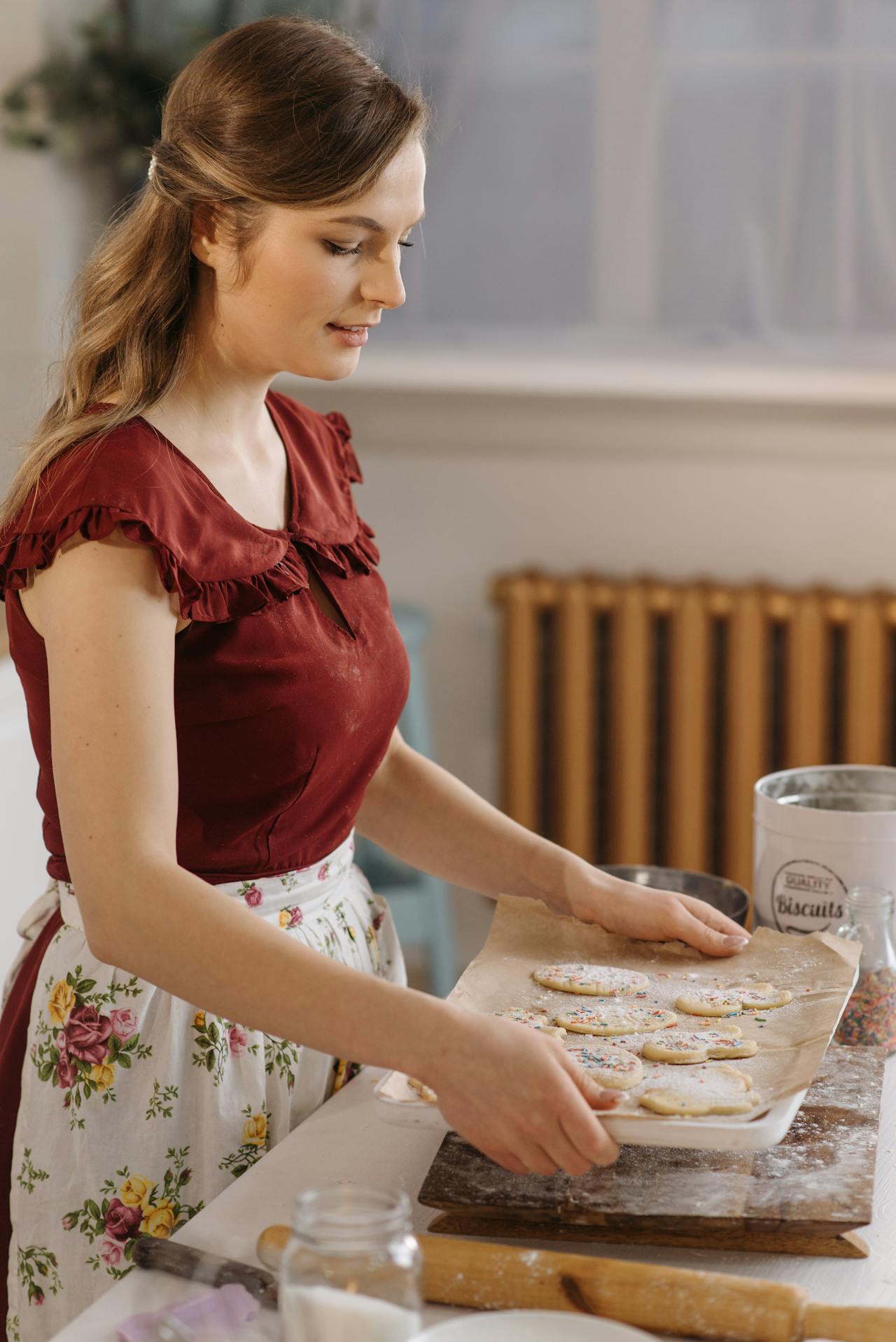
A delighted woman baking cookies | Source: Pexels
Six years into my marriage with David and those sounds still made my heart swell. Watching our daughters, Sophie and Liza — technically, my daughter and his daughter from our previous marriages — become inseparable has been the greatest gift of this whole blended family thing.
“Mom! Can we have cookies now?” Sophie called from upstairs.
“Only if you’ve finished your homework!” I shouted back.
Thundering footsteps cascaded down the stairs as both girls, now 15, burst into the kitchen, laughing.
“We’re starving,” Liza proclaimed dramatically, reaching for a cookie. Her dark curls matched her father’s, while Sophie’s blonde waves came from me.
“Dad’s going to be late again, isn’t he?” Sophie asked, perching on a barstool.
I nodded, sliding glasses of milk their way. “Budget meeting. He said not to wait up.”
“Hey, did you guys see the flyer? For the Spring Pageant?” Liza asked, her eyes bright with excitement. “We should totally do it.”
Sophie hesitated. “I don’t know…”
“Come on! We could wear matching dresses and everything,” Liza insisted.
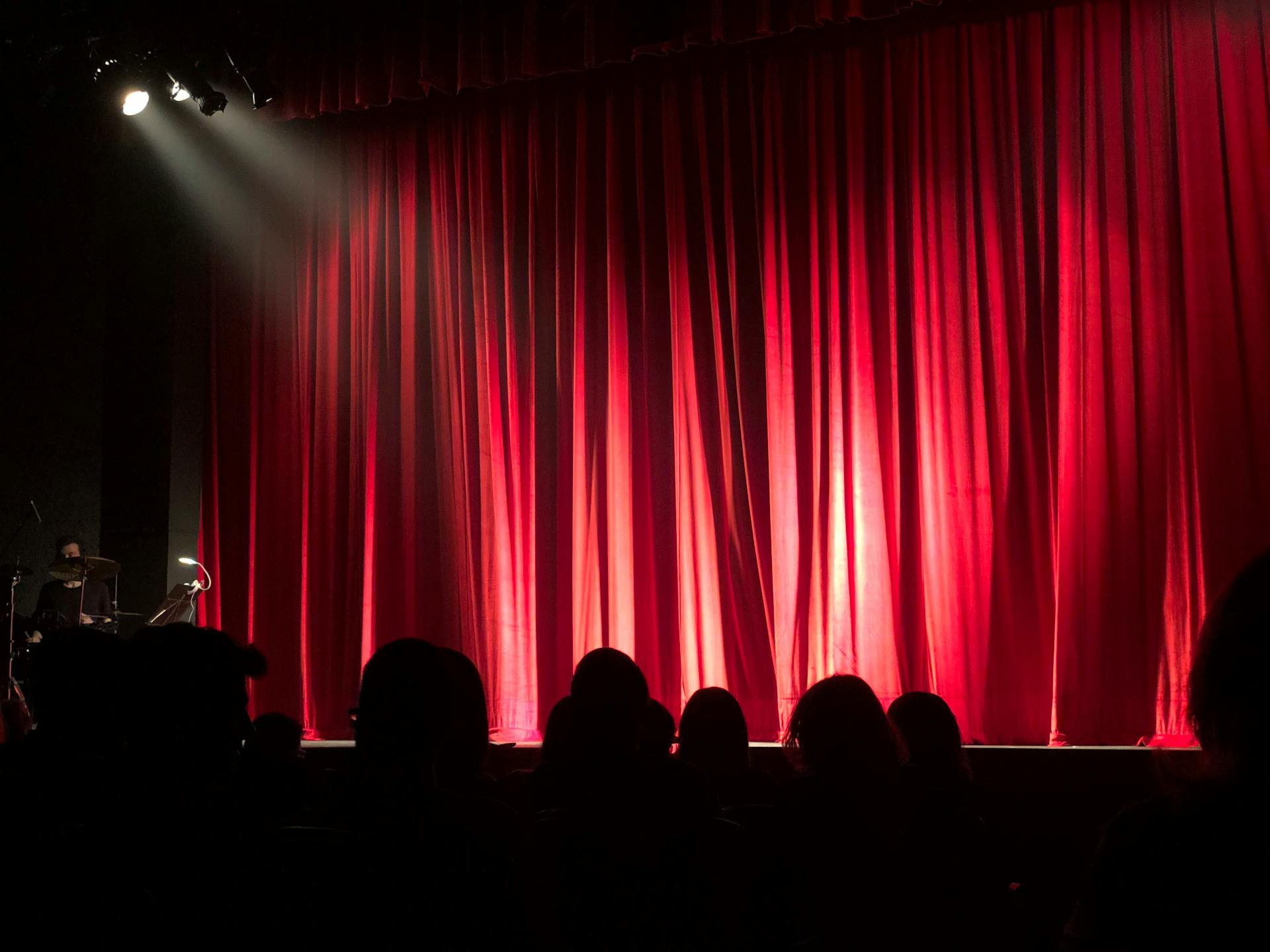
People gathered at an auditorium | Source: Pexels
“And who’s going to make these matching dresses?” I raised an eyebrow, already knowing I’d be volunteering.
They both turned to me with identical pleading expressions.
“Please, Mom? You’re amazing with the sewing machine,” Sophie said.
“Please, Elina?” Liza echoed. She’d never called me “Mom,” but the way she said my name carried the same warmth.
How could I say no to those faces?
“Fine,” I laughed. “But you’re both helping with the design.”
Later that night, as David slipped into bed beside me, I whispered, “The girls want to enter the Spring Pageant. Together.”
He pulled me close. “That’s great. My mother called, by the way. She wants us all for Sunday dinner.”
My stomach knotted. “Wendy invited all of us?”
Even in the darkness, I felt his hesitation. “Well, she asked about Liza specifically, but—”
“It’s fine,” I cut him off. “We’ll all go. It’s been weeks since her last… comment.”
David sighed. “I’ve talked to her so many times, Elina. I don’t know what else to do.”
I squeezed his hand. “We just keep showing her that we’re a family… all of us.”
Sunday dinner at Wendy’s sprawling colonial house was always an exercise in restraint. And that day was no exception.
“Liza, darling, I got you something,” she announced after we finished her famous pot roast. She pulled out a small jewelry box and handed it to her granddaughter.
Liza opened it to find a delicate silver bracelet with a heart charm. “Wow, thanks, Grandma!”
Sophie sat quietly beside her, her sad eyes fixed on her empty plate. I felt a familiar burn in my chest.
“The girls have exciting news,” I said, forcing brightness into my voice. “They’re both entering the Spring Pageant at school.”
“How lovely,” Wendy replied, her smile dimming slightly. “Liza, you’ll be wonderful on stage. You have your late mother’s grace.”
David cleared his throat. “Both girls will be wonderful.”
“Of course,” Wendy said dismissively, then turned to Liza. “Are you wearing the blue dress we saw at the mall last month?”
“Actually,” I interjected, “I’m making their dresses. Matching ones.”
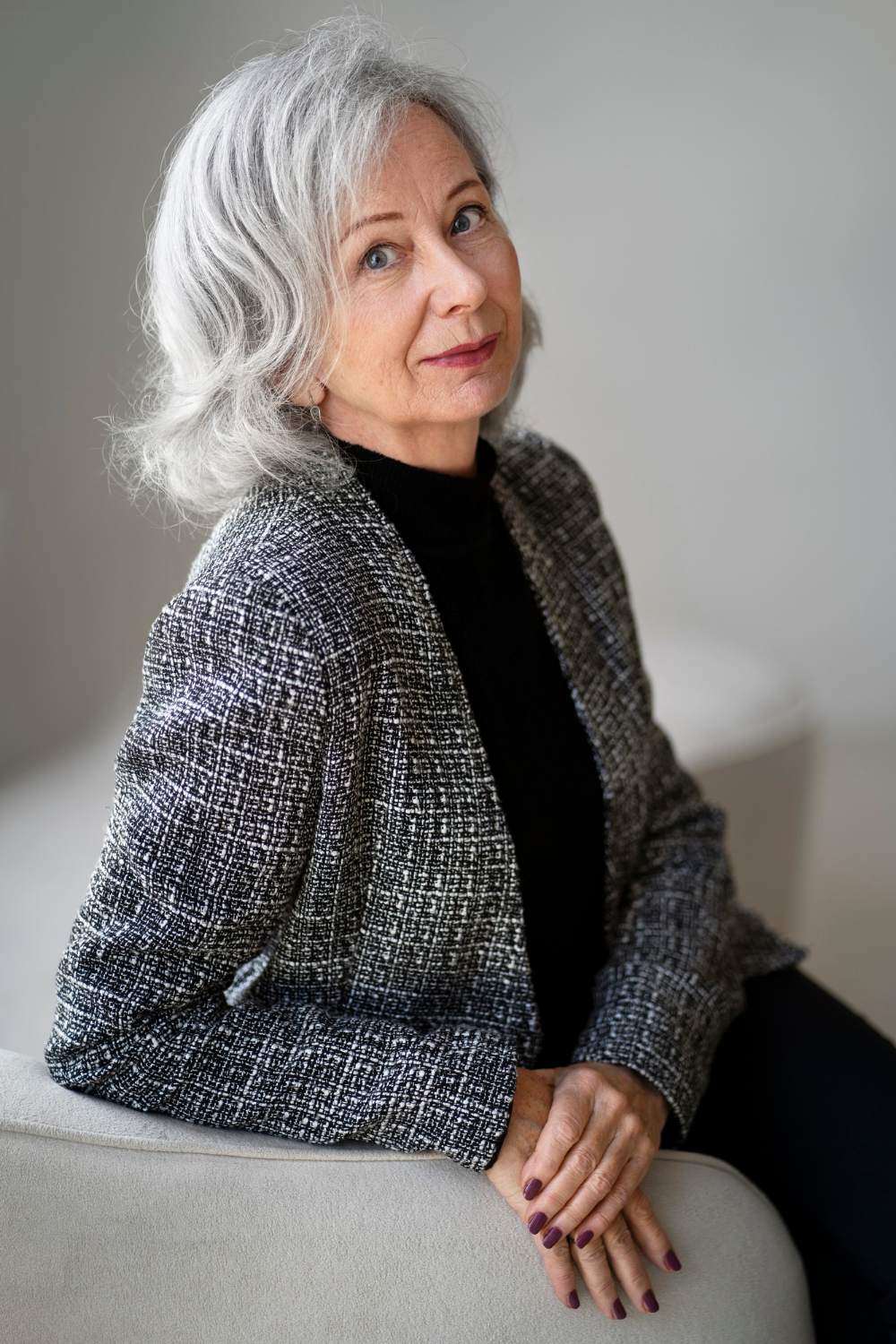
An elegant senior woman sitting on the couch | Source: Freepik
Wendy’s eyebrows shot up. “Matching? But Liza should stand out. She’s got the looks.”
“Mom?” David warned.
“What? I’m just saying some girls are naturally more suited for these things. It’s genetics.”
Sophie pushed her chair back slightly. “May I be excused? I need to use the bathroom.”
After she left, I leaned forward. “Wendy, we’ve talked about this. Both girls deserve equal treatment.”
“Equal treatment?” She laughed. “Elina, dear, I’m not being cruel. I’m being realistic. Sophie is YOUR daughter. Not David’s. Why pretend otherwise?”
“Because we’re a family,” David said firmly. “All of us.”
“Family is blood,” Wendy hissed, her voice hard as stone. “You can’t change that with wishful thinking. Sophie is not my granddaughter. And she never will be.”
“Mom, can you please—”
“David, it’s okay.” I cut him off gently, already turning toward the stairs. “Let’s just go home.”
I headed up to get the girls.
***
For weeks, I stayed up late working on the dresses — pale blue satin with hand-embroidered flowers across the bodices. The girls would try them on, twirling in front of the mirror, making plans for their hair and makeup.
“These are the most beautiful dresses ever!” Sophie exclaimed during their final fitting, running her fingers along the delicate lace trim.
“Elina, you’re a genius!” Liza agreed, examining her reflection.
I smiled, exhausted but proud. “You’re both going to steal the show.”
The pageant was scheduled for Saturday morning at the community center near Wendy’s neighborhood. Since it was an early start, David suggested we stay at his mother’s the night before.
“It makes sense,” he said when I expressed concern. “She’s five minutes from the venue. We’d have to leave our place at dawn otherwise.”
“But the dresses—”
“We’ll bring them with us and keep them safe. It’s one night, Elina.”
I relented, telling myself I was being paranoid. Wendy wouldn’t stoop so low as to sabotage a child’s moment. Would she?
***
Friday evening found us settled in Wendy’s guest rooms. I carefully hung both dresses in the closet of the girls’ room, making sure they wouldn’t wrinkle overnight.
At dinner, Wendy was unusually pleasant, asking the girls about school and their pageant preparations. I began to relax, thinking maybe I’d misjudged her.
After dessert, Sophie turned to Wendy. “Grandma, can I try on my dress one more time? Just to make sure everything’s perfect?”
The room went silent. It was the first time Sophie had called her “Grandma” directly.
Wendy’s smile tightened. “I don’t think that’s a good idea. You might get something on it.”
“I’ll be super careful,” Sophie promised.
“I said no.” Wendy’s voice turned cold. “Besides, girl, these pageants are about poise and natural beauty. Some girls just have it, and others…” She let the sentence hang.
Sophie’s face crumpled slightly before she composed herself. “You’re right. Better to save it for tomorrow.”
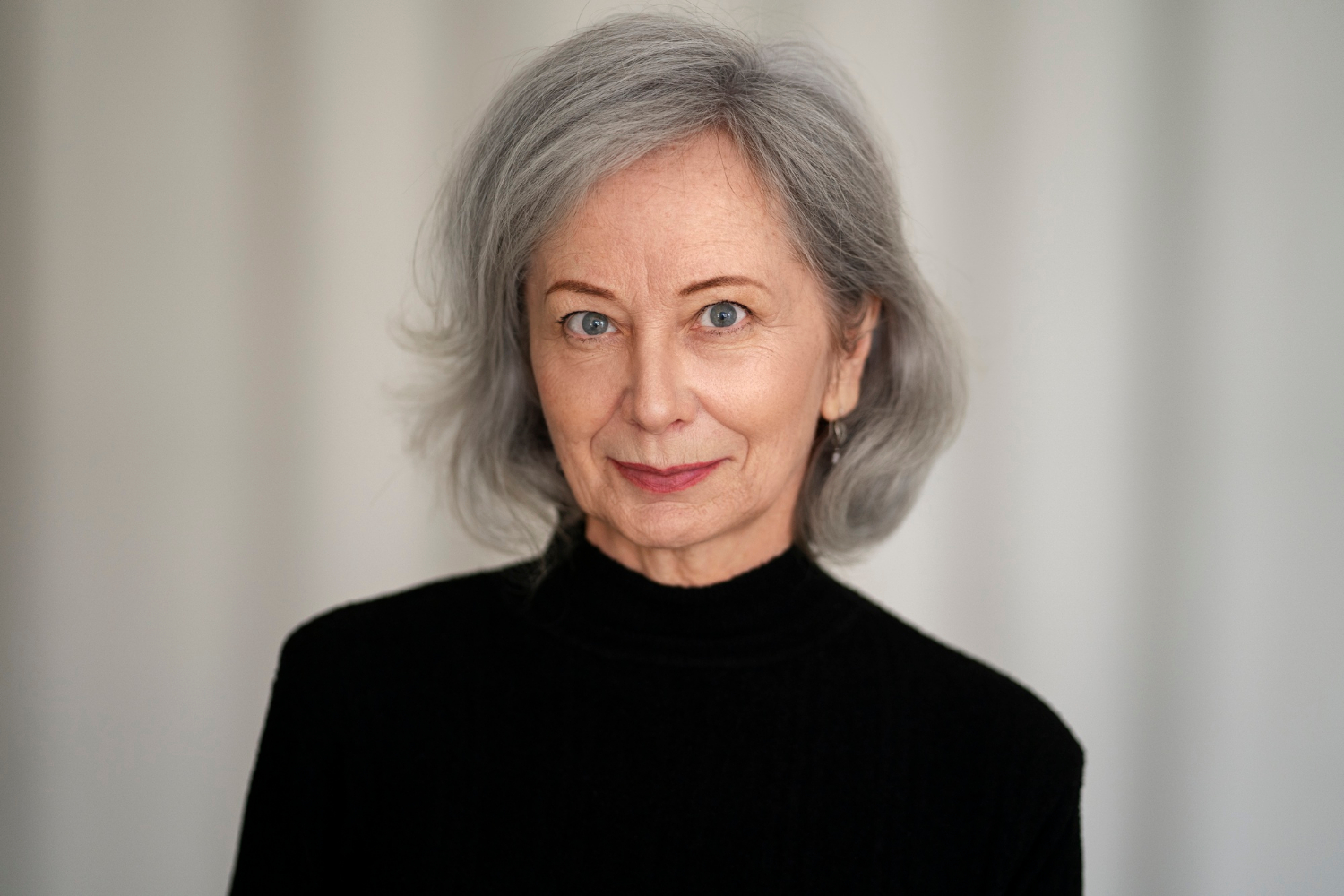
An older woman looking at someone and smiling | Source: Freepik
Later, as I tucked the girls in, Sophie whispered, “She hates me, doesn’t she?”
“No, sweetie,” I lied. “She just… doesn’t know how to be a grandmother to both of you yet.”
“It’s been six years, Mom.”
I had no answer for that.
***
Morning chaos kicked off right at 7 a.m. with showers, breakfast, hair… the works. Everyone was scrambling to be ready by nine. The moment we got to the venue, the girls darted off to the dressing room, and David stayed behind to unload the car.
I was fixing my earring when Sophie burst out of the room, tears streaming down her face.
“MOM?? My dress…”
My heart dropped. “What happened, sweetie?”
“It’s RUINED.”
I rushed to the girls’ room. Liza stood there in her perfect dress, looking shell-shocked. And there, on the table, lay Sophie’s dress. A tear ran along the side seam, an ugly brown stain botched across the bodice, and worst of all, a scorched patch ran right through the embroidered flowers.
“Oh my God… what happened?” I whispered, picking it up with trembling hands.
“I don’t know,” Sophie sobbed. “It was fine when I saw it in the closet last night. But when I took it out of the bag to get dressed, it was like this.”
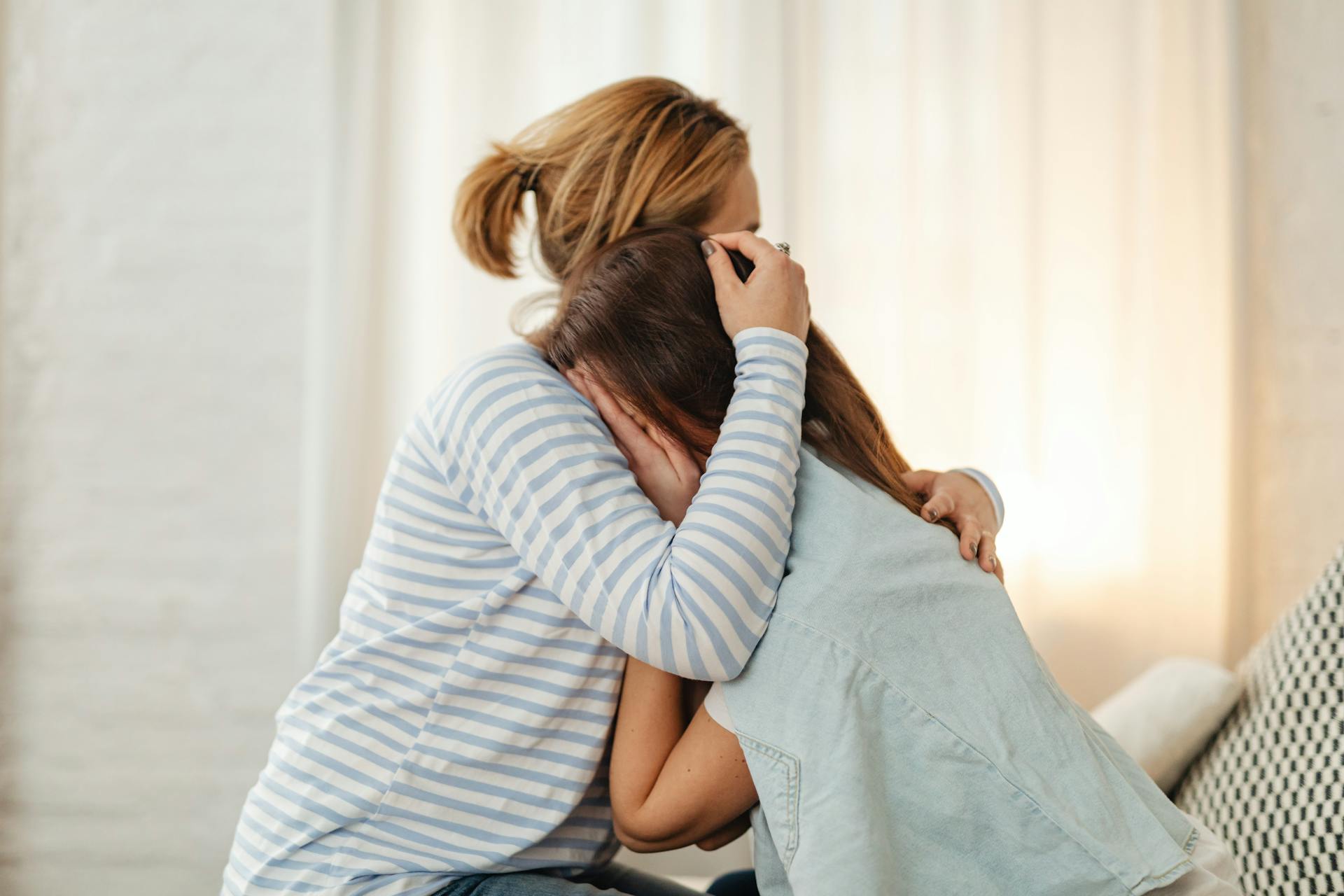
A mother comforting her sobbing daughter | Source: Pexels
I looked around the room when a soft throat-clearing came from the doorway. Wendy stood there, impeccably dressed, watching us.
“Such a shame,” she said, her voice dripping with false sympathy. “But some things aren’t meant to be. Perhaps it’s a sign.”
“A sign of what?” I snapped.
“That some girls don’t belong on that stage. Don’t worry, Sophie. You can watch Liza shine.”
David appeared behind his mother. “What’s going on? The show starts in five minutes.”
Before I could answer, Liza stepped forward, her face set in determination. “I think Grandma ruined Sophie’s dress.”
“What?” David looked between them all. “Mom, did you..?”
“Of course not,” Wendy scoffed. “Don’t be ridiculous.”

A man pointing an accusing finger at someone | Source: Pexels
“I saw you,” Liza retorted. “Last night. You came in when you thought we were asleep. You took Sophie’s dress. I thought you were ironing it.”
The room went silent, and Wendy’s face hardened.
“Liza, darling, you must have been dreaming.”
“I wasn’t.” Liza’s voice didn’t waver. Then, to everyone’s shock, she reached behind her back and unzipped her dress, stepping out of it. Standing in her slip and tights, she held out the blue gown to Sophie.
“Here, take mine.”
Sophie backed away. “No, I can’t—”
“Yes, you can,” Liza insisted, hugging her. “We’re sisters. This is what sisters do.”
“Liza!” Wendy gasped. “Put that dress back on immediately!”
Liza ignored her, helping Sophie into the dress. “It doesn’t matter which one of us wears it. We both belong on that stage.”
“I won’t allow this.”
David finally found his voice. “Yes, you will. Or you can explain to everyone at the pageant exactly why one dress is destroyed and your granddaughter isn’t participating.”
Wendy’s face went white. “She is not my granddaughter.”
“Yes, she is,” Liza said fiercely. “And if you can’t see that, then maybe I don’t want to be your granddaughter either.”
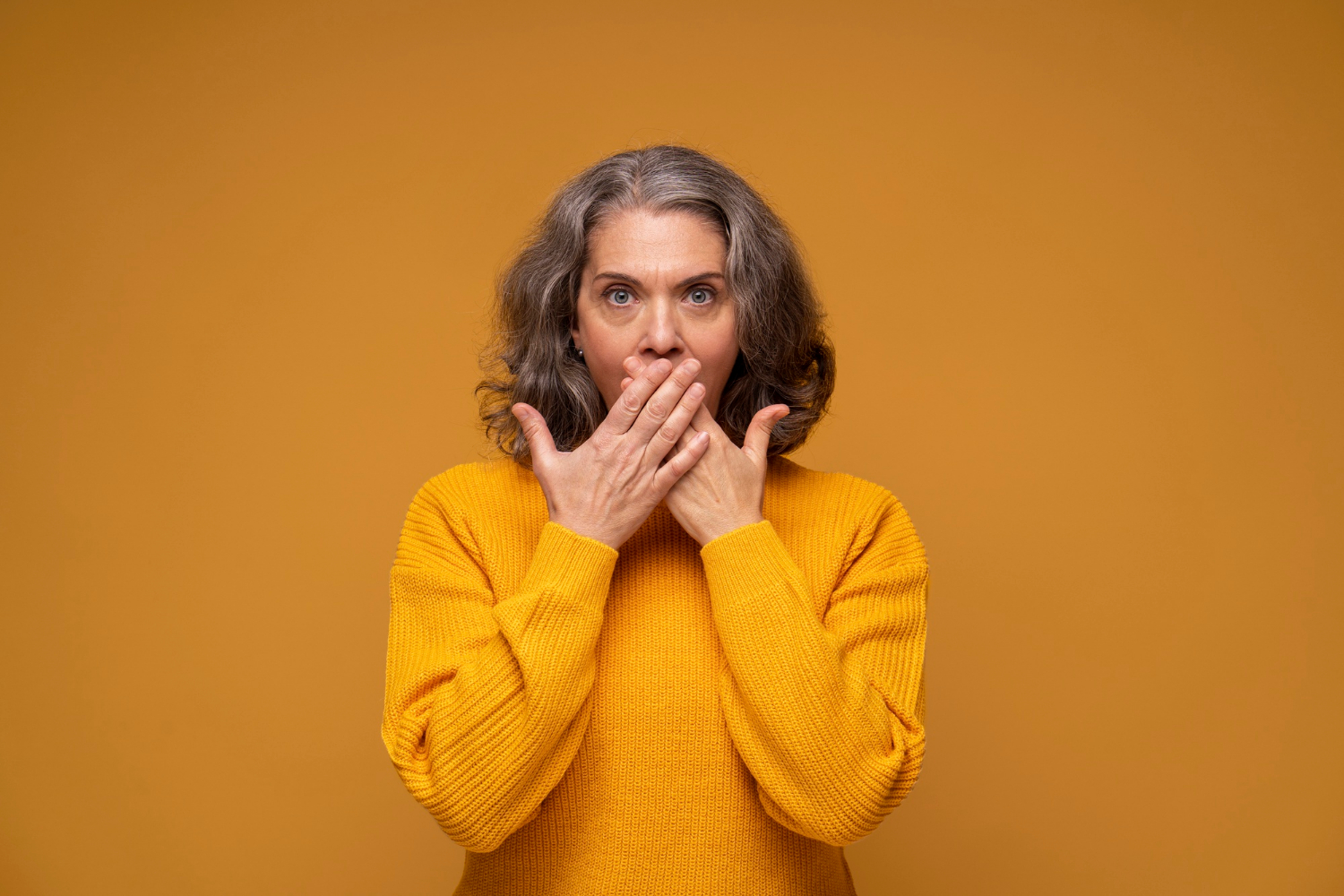
A stunned senior woman | Source: Freepik
The community center buzzed with excitement as families filled the auditorium. Backstage, I helped adjust Sophie’s borrowed dress while Liza sat nearby in jeans and a blouse.
“You don’t have to do this,” Sophie told her again.
Liza shrugged. “There’ll be other pageants. But there’s only one you.”
When Sophie walked onto that stage, she carried herself with a grace born from knowing she was truly loved. Not by everyone… but by the people who mattered most.
She didn’t win first place. She came in second, right behind Emma and her professionally tailored gown. But as the girls filed off stage, crowns in hand, the pride in Sophie’s eyes was worth more than any trophy.
Wendy left before the ceremony ended, slipping out a side door without saying goodbye.
That evening, as the four of us celebrated with pizza in our living room, David’s phone buzzed with a text from his mother: “I hope you’re happy with your choice.”
He showed it to me, then typed back: “I am. It’s time you made yours.”
We didn’t see Wendy for six months after that. When she finally called, she asked to visit. Then, she arrived with two identical gift bags — one for Liza and one for Sophie.
It wasn’t an apology. It wasn’t acceptance. But it was a start.
Blood doesn’t make a family. Love does. And sometimes, it takes a child to teach an adult what that really means.
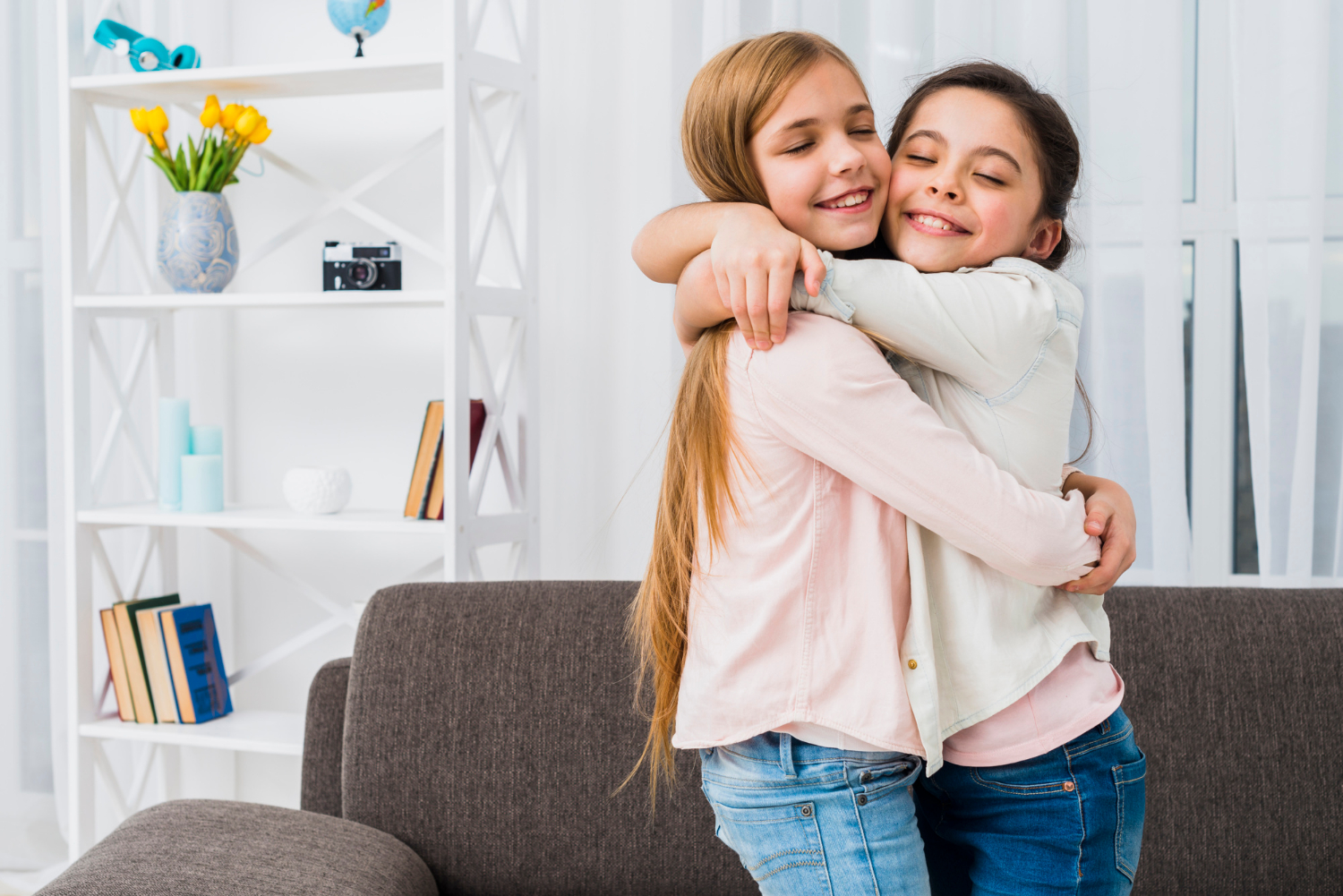
Two smiling girls hugging each other | Source: Freepik


